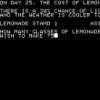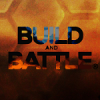How do you format your game design document?
http://marceltau.com/files/Arcana_Project_GDD.pdf
Is this somewhat the format used in professional studios in the industry?
Anyone have their own format that works better for them?
I am getting ready to work on my first game for a contest, and I want to get everything more organized, so I could use any input.
Thanks.
They call me the Tutorial Doctor.
For a beginner, it is good to follow a template, because it makes sure you build something coherent that encompasses the information it needs to.
However, do not hesitate to break this template apart. Games are not built into generic templates, rather, the so-called template varies based on the project (because every project is different).
I would approach this document with a grain of salt. Read it, try to find all of the info that is given. You should have the same kind of information present in your original GDD.
Do not hesitate to add-in wireframes and flowcharts.
This document seems to do a poor job of putting all wireframes together and discussing the specifics later. If possible, break it down by interface.
Also, it seems the styleguide is included in the GDD. This is one way to take a stab at it, but it makes for long documentation. If possible, I would advise to break the styleguide apart (art styles, etc.) and keep everything art-agnostic as much as possible.
I'm not sure why there is actual code in the design doc, that may also be unecessary. The TDD (Technical Design Document) should be produced by developers once the GDD has been dissected by the production team, not before, and certainly not by a designer.
Same holds true for estimates (time to make a character, etc.). The GDD should only contain gameplay elements, interfaces, etc. Not try to be an "everything bible". This leads to confusion.
As a lone developer I like to play fast-and-loose with GDDs. Since they are usually for my eyes only, I tend to include sketches, graph-paper layouts, and flow chart/design pattern illustrations a la Machinations (http://www.jorisdormans.nl/machinations/) for the specific game mechanisms. I've been know to staple index cards to pages and include photos of paper prototypes, generally all jammed into a folder.
The real key here is that the user ("reader") of the GDD is me, so it only needs what I want in it. If you are making a GDD to be used by a team, for potential publishers, or for artists/programmers/whoever, you'll need to tailor it for those readers. Know your audience!
Before I sound too careless, I really believe good planning leads to good design. The GDD is vital, but the format is not.
Indie games are what indie movies were in the early 90s -- half-baked, poorly executed wastes of time that will quickly fall out of fashion. Now go make Minecraft with wizards and watch the dozen or so remakes of Reservior Dogs.
But I guess they can be used as a simple guideline as well. Thanks for the tips.
They call me the Tutorial Doctor.
Ah, OK... I think I misunderstood. I also keep a design notebook that accompanies my GDD. In it I record what I work on by the day, problems I run into, solutions I may (or may not) find, and a written record of my thought process. Maybe that is what you are thinking about? Something that you can easily organize into a post-mortem when you have a finished product?
I go to B&N and buy up all the lined journals they have in the bargain bin. Each game/design gets its own journal. Also the act of writing on paper with a pen -- not at a computer -- lets me concentrate more on the task at hand.
Hope that helps!
Indie games are what indie movies were in the early 90s -- half-baked, poorly executed wastes of time that will quickly fall out of fashion. Now go make Minecraft with wizards and watch the dozen or so remakes of Reservior Dogs.
Ah, OK... I think I misunderstood. I also keep a design notebook that accompanies my GDD.
I did that once :)
Turns out there was no post-mortem at the end of the project, so I was glad I had my own notes. Definitely recommend it, if you can make time for it.
Turns out there was no post-mortem at the end of the project, so I was glad I had my own notes. Definitely recommend it, if you can make time for it.
I really try to make time for non-coding/technical work in my design. 10 hours of unfocused work in Unity barely equals what I can map out with my design journal in 30 minutes. If I get working with the tools before I have a plan I end up just playing with tools and accomplishing little. I have made some fantastic looking environmental scenes, though. I'm the Bob Ross of Unity.
Indie games are what indie movies were in the early 90s -- half-baked, poorly executed wastes of time that will quickly fall out of fashion. Now go make Minecraft with wizards and watch the dozen or so remakes of Reservior Dogs.
I really try to make time for non-coding/technical work in my design. 10 hours of unfocused work in Unity barely equals what I can map out with my design journal in 30 minutes.
I generally do that on my android phone when I'm not in a spot where I can work on my projects. Can't afford to waste that precious spare time on my computer... wait... what AM I doing RIGHT NOW? :P
Can't afford to waste that precious spare time on my computer... wait... what AM I doing RIGHT NOW?
Me, too! ![]()
I've been getting more serious with using Articy: Draft 2. I've got to say that now that I've pinned down the way it works, I've been able to use it for everything from broad design to mapping out dialog trees. I don't think it is for everyone, but it sure hits some sweet spots.
Indie games are what indie movies were in the early 90s -- half-baked, poorly executed wastes of time that will quickly fall out of fashion. Now go make Minecraft with wizards and watch the dozen or so remakes of Reservior Dogs.









